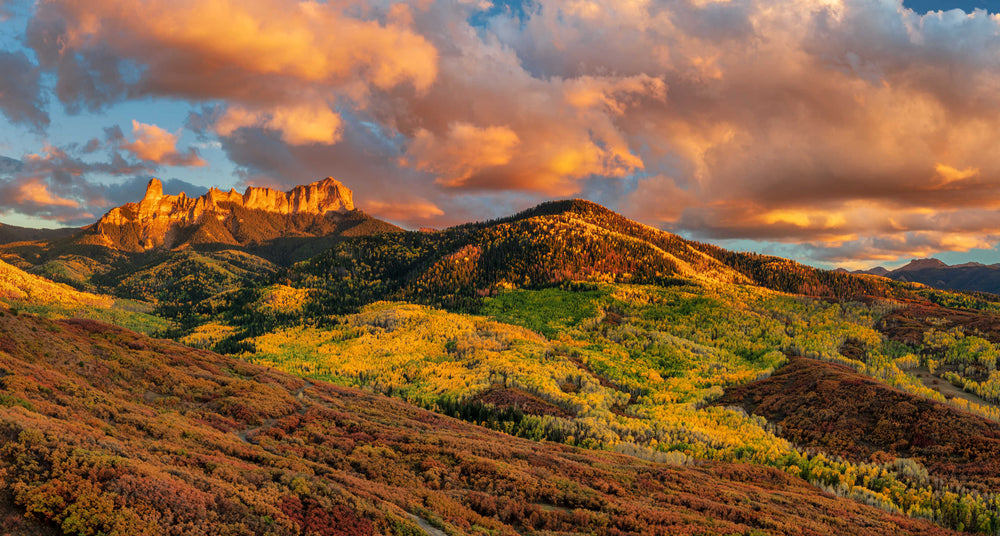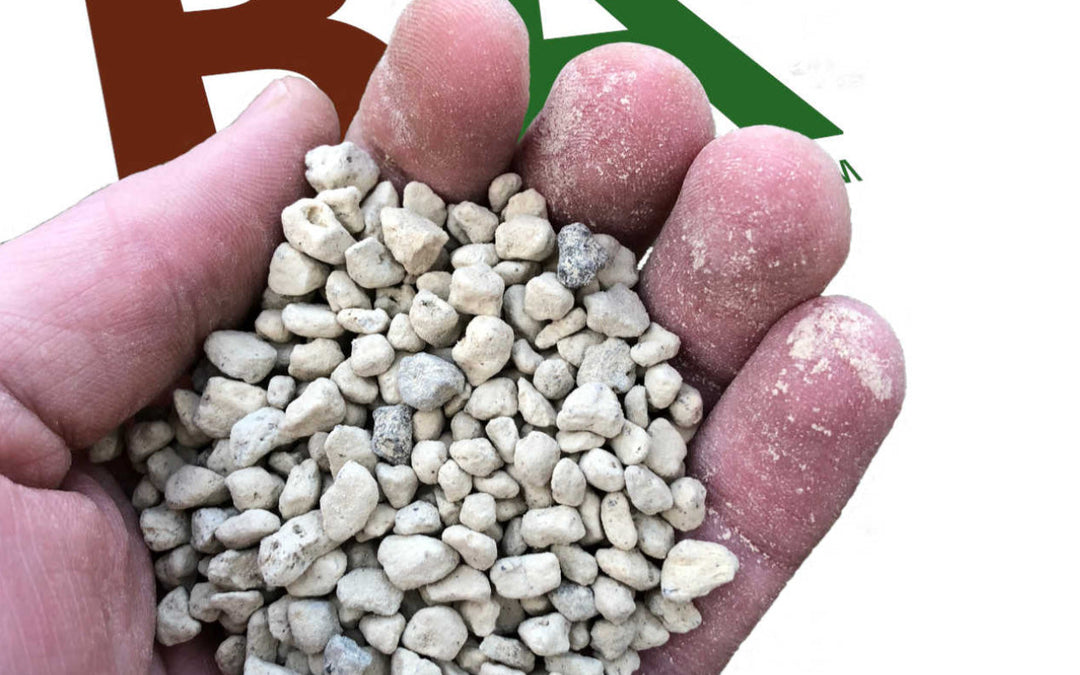What’s The Deal with Microclover Lawns?
If you're dreaming of a vibrant, lush green lawn, listen up! Microclover is a relatively new product taking the lawn and garden industry by storm, and we're here to explain why we love it, the differences between microclover and grass, how it does in sun and shade, and more, so you can choose the right ground cover for your yard.
What is Microclover?
If you ask someone if they would rather have a yard full of grass or clover, chances are they'll look at you like you're crazy. Clover has typically been considered a weed, but thankfully, that perception is changing as more and more people realize the true potential of this versatile ground cover.
Microclover is a smaller, dwarf variety of the Dutch white clover, also known as Trifolium repens. It's known for growing low to the ground, mixes easily with turfgrass, and can help fill in spots in traditional grass to create a uniform look and feel.
Microclover lawns have been popular in Europe for several decades. Although it is a common addition to golf courses in Denmark and the Netherlands, it's still a relatively new addition to the United States.
What Does Microclover Look Like?
Hearing the word 'clover' probably brings an image of a four-leaf clover to mind, but microclover is so much more than that. White clover is grown frequently and widely in the United States, with stems between four and eight inches tall. In the warmer months, you can find white and light pink flowers in the clover, which tends to grow in clumps.
The 2 most popular versions of microclover are:
- Pipolina
- Pirouette
Unlike its larger relative, microclover grows between four and six inches tall and is easily mowed to two to three inches for a neat, trim appearance. In addition, the leaves are smaller, and the microclover grows more evenly without producing as many flowers as its full-size counterpart.
Is Microclover Good for Lawns?

Growing a microclover lawn has an incredible number of benefits to homeowners and the environment.
Using microclover seeds for your lawn can:
- Prevent the growth of weeds without weed killers
- Conserve water
- Save time, money, and energy used by mowing
- Reduce erosion
- Attract bees and other pollinators
- Create natural, nutrient-rich manure for fertilizing
- Cut down on the need for dethatching and aeration
Microclover Lawns and Weeds
Although traditional clover can grow well with some varieties of grass, it can be aggressive. The dense growth of white clover can be great for preventing chickweed, dandelions, and other unwanted weeds, but it can also edge out grasses and ground covers.
Microclover seed plays nicely with turfgrass like Kentucky bluegrass, tall fescue, and perennial ryegrass, growing with the grass rather than competing with it. It can still help prevent weeds, thanks to its low growth, but it won't edge out desirable grass seeds.
Do Microclover Lawns Take More Water?

Compared to traditional lawns, planting microclover seeds is a great way to help reduce water usage and protect against drought. Microclover lawns should be watered daily after planting to help grow deep, strong roots. Once established, microclover requires roughly 25 percent less water than conventional lawns.
For people who live in environments that frequently see dry, hot summers or that are subject to water-use restrictions, growing a microclover lawn can be a great way to keep your yard looking lush and vibrant while conforming to the water-use guidelines.
According to the United States Environmental Protection Agency, the average American household uses nearly 100 gallons of water per day on outdoor projects, with more than half of that used for watering lawns and gardens. The EPA also estimates that as much as 50 percent of the water we use for irrigation is wasted due to factors such as wind, evaporation, and runoff.
Are Microclover Lawns Low Maintenance?
If you want a lush, green lawn, you may be under the impression that you must dedicate every weekend to keeping your yard looking its best. However, microclover is known for helping you save time, money, and energy while still maintaining a beautiful lawn that will be the envy of your neighborhood.
Compared to grass, microclover lawns are incredibly low maintenance. A traditional lawn needs to be mowed or trimmed regularly, usually weekly or even more frequently during high-growth periods. Microclover is almost the opposite. Depending on how you want your grass to look, you can mow your microclover lawn a few times each season or even more infrequently for a lawn that looks more like a lush meadow.
Less frequent mowing means you'll save time and energy as well as be more environmentally friendly by using less gas in your lawn mower or trimmer. If you prefer to outsource your lawn maintenance, you'll also save money by needing fewer visits throughout the lawn care season.
Will Microclover Seed Help with Soil Erosion?

Erosion is caused by a lack of stability within soil influenced by environmental factors such as wind, water, ice, and gravity. Microclover lawns help reduce erosion by providing structure within the soil through its deep and expansive root systems as well as by protecting the top layer of soil from wind erosion.
Planting microclover seeds in your yard or along banks and slopes is a great way to control erosion. The vegetation helps reduce the impact that raindrops have on the ground by slowing down their velocity while the roots hold the soil together, giving water fewer avenues to create large areas of movement in the dirt.
Do Microclover Lawns Attract Insects and Bugs?
Insect control and preventing diseases from taking over your lawn can be challenging with traditional grass. However, planting microclover seeds is a great way to dissuade bugs and other insects from finding your lawn as appealing.
Pests such as aphids, moths, and maggots can find turfgrasses appealing, which can lead to an infestation of the worst kind. Microclover lawns attract the good kinds of visitors, such as butterflies, bees, and birds, all of which prey on the bugs that you want to prevent. Increasing the natural pest response will help keep your yard looking great while also saving you money on natural pesticides.
Do Microclover Lawns Need to Be Fertilized?
Another great perk of adding microclover seed to your lawncare routine is that it rarely needs to be fertilized. Microclover is a legume, meaning that it makes its own fertilizer naturally by removing nitrogen from the air and converting it to a form that is useful to plants.
Unlike traditional lawns that require fertilizer applications roughly four times per year, planting microclover seed or using a blend of turfgrass and microclover seeds can eliminate the need for fertilizer on your entire lawn.
What Maintenance Do Microclover Lawns Need?

Traditional lawns require maintenance throughout the year to stay looking their best.
Although they are both necessary processes – even for healthy lawns – these 2 processes are expensive and time-consuming:
- Aeration
- Dethatching
Aeration requires the puncturing of holes or cores into the soil throughout your lawn to increase the flow of water, oxygen, and nutrients and to release compacted soil to help root growth. This process can be done manually, with a machine, or you can pay to have a lawncare professional aerate your yard.
Dethatching involves removing the layer of dead grass and debris from your lawn and is essentially a very deep and thorough raking of your grass. Removing this excess material helps ensure that water, air, and nutrients are able to penetrate the surface.
When you plant microclover seeds, however, these maintenance activities aren't needed. Microclover lawns avoid compaction naturally by acting as living mulch. As microclover lawn roots decompose, the macropores that are produced attract earthworms. The worms' movement and the macropores' presence help prevent the buildup of thatch and encourage naturally aerated soil.
One type of routine maintenance that is needed with microclover lawns is reseeding. Every two to three years, it's necessary to spread microclover seed across your lawn to keep it looking green and lush. Although this isn't out of the ordinary with traditional turfgrass yards, you can typically go longer in between reseeding.
Is Microclover Seed Invasive?
Many people think of invasive as automatically harmful, but that's not always the case. The definition of an invasive species is a non-native organism that expands from where it was originally introduced and causes harm to the economy, environment, or human health. Although microclover spreads quickly and expansively from where it is introduced due to its rhizomatous growth patterns, it doesn't cause harm to plants or the environment around it.
If you're worried about introducing microclover seeds to your lawn, rest assured that you will not damage your surrounding yard by planting microclover. Although it will smother unwanted weeds, it will also improve the health and nutrition of the soil by increasing nitrogen levels for nearby plants. If you want to remove areas of microclover, you can apply selective natural herbicides or nonselective natural herbicides.
Is Microclover Seed Expensive to Buy?
Microclover seed isn't inexpensive, but the benefits tend to help pay for themselves. If you're overseeding your lawn, you'll need roughly one pound of microclover seed for every 1000 square feet. For initial seeding or serving as a groundcover, we recommend between two and four pounds of seed.
For microclover seeds, you'll pay between $40 and $50 per pound. If you're looking for a microclover seed blended with turfgrass seed, you'll pay the same price for two pounds, or roughly half the cost. Rocky Mountain BioAg® also offers a great selection of seeds for your lawn and garden!
What Are the Cons of Microclover?
While there are many great things about microclover lawns, there are also a few areas where traditional grass seed performs better.
These include:
- Areas of heavy traffic
- Where people have bee allergies
- Heavily shaded areas
- Places you’d like to be perfectly tidy
Is Microclover Seed Good for Foot Traffic?

Although it's beautiful and can tolerate some wear and tear, microclover lawns aren't resilient when it comes to areas that receive lots of foot traffic. If you spend a lot of time hanging out in the yard or want to add grass to a walkway, you probably won't have success with microclover seeds. However, an easy fix for the issue is to use a turfgrass and microclover blend.
Do Microclover Lawns Attracts Bees?
One of the great things about planting microclover seeds can also be a negative if you or someone you love has a bee allergy. Because these lawns tend to attract more pollinators, you're more likely to be exposed to bees. Although these buzzing beauties are great for the environment, they're dangerous if you are allergic.
Can You Plant Microclover in Shade?
Microclover lawns are beautiful and versatile, but they're not great for areas that receive a lot of shade. Microclover prefers to be in full sun to partial shade but does best when exposed to higher levels of sunlight. Neither microclover nor turf grass are good for full shade, so we don't recommend either for areas that rarely receive any direct sunlight.
What Does a Microclover Lawn Look Like?
If you're someone who likes the look of a perfectly manicured lawn, you may not want to go full-send on trading turf grass for microclover seed. Although this type of ground cover is beautiful, lush, and green, it doesn't have the perfectly kept look that you will find with a traditional lawn.
Microclover lawns tend to look more like lush meadows than neatly trimmed blankets. Both looks are beautiful, but they each attract a different type of admiration from homeowners and landscapers. If you prefer something more traditional, then a blend of microclover and turf grass or a traditional lawn is probably your best bet.
Where Can I Buy Microclover Seeds?
Rocky Mountain BioAg® offers two choices for adding microclover seeds to your lawn:
Choose between a full lawn of microclover or our scientifically tested blend that pairs the perfect ratio of turfgrass seeds with microclover for a lawn that brings together the best of both worlds. Our custom blend is designed to thrive in extreme drought, offers supreme weed resistance, and reduces the amount of money you will spend on natural weed killers.
Whether you're looking to supplement your grass with microclover or need complete coverage for a slope in your yard, there are so many reasons to choose microclover seeds for your lawn care needs!









Leave a comment